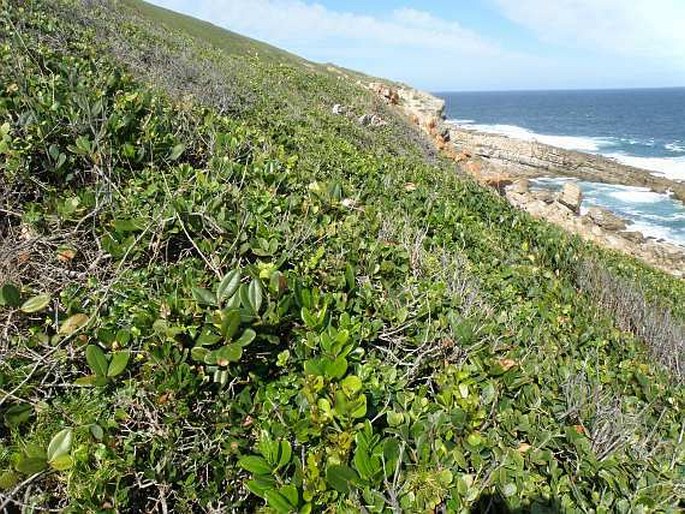Syn.: Aspidium capense Willd., Aspidium capense Sw., Aspidium coriaceum Willd., Aspidium coriaceum (Sw.) Sw., Dryopteris adiantiformis Kuntze, Hypopeltis coriacea (Sw.) Bory, Lastrea adiantiformis (G. Forst.) Vareschi, Nephrodium duriusculum C. Presl, Polypodium adiantiforme G. Forst., Polypodium coriaceum Sw., Polypodium politum Poir., Polystichum adiantiforme (G. Forst.) J. Sm., Polystichum capense J. Sm., Polystichum coriaceum Schott, Rumohra aspidoides Raddi, Tectaria coriacea (Sw.) Link
Family: Dryopteridaceae Ching

Distribution: Tropical and subtropical parts of the Old and New World – in America extends to northern Florida and Bermuda, in the south of South America to Patagonia and on the Falkland Islands, in Africa is known from Uganda to South Africa, it also occurs in New Guinea, eastern Australia, New Caledonia, New Zealand and on some islands in the Atlantic and Indian oceans (Saint Helena, Tristan da Cunha, Comoros, Seychelles, Madagascar, Mascarene Islands and Amsterdam Is.).
Ecology: Grows as terrestrial fern in the shaded understory of evergreen forests on boulder slopes, rarely also in shrubs and open rocky slopes.

Description: Fern with creeping rhizome 0.5–1 mm in diameter, rhizome scales are ovate to lanceolate, 6–16 mm long, acute, light brown, with erose margins. The fronds are evergreen, shiny; stipe is 14–50 cm long, grooved above, with brown, ovate, acuminate scales; lamina is leathery, 3- or 4 pinnatifid, broadly ovate, 17–50 cm long and 12–35 cm wide; pinnules are ovate, pinnatifid to dentate, with unequally cuneate base, undersurface with few scales along the veins. Sori are round, about 2 mm in diameter, usually 1 per lobe, indusium is circular, glabrous, entire.
Threat and protection: Rather common fern, it is considered as Least Concern (LC) in the Red List of South African Plants (2009).


These images were taken in the Republic of South Africa, Western Cape, Garden Route NP, Plettenberg Bay, Robberg Peninsula (18. 9. 2012).


